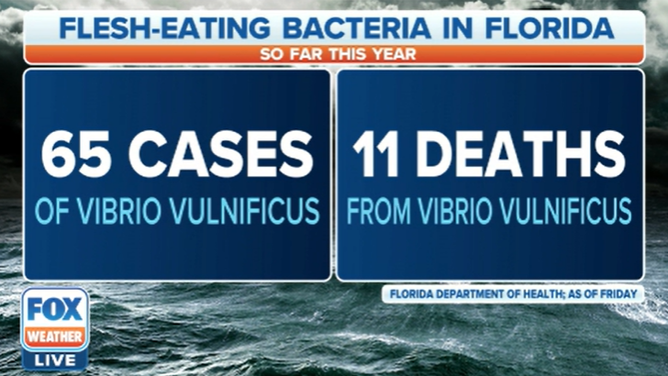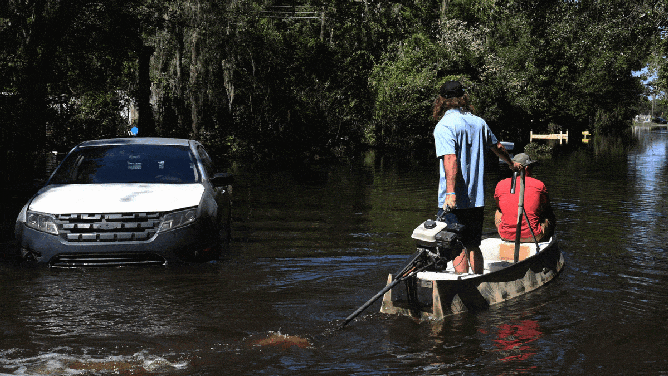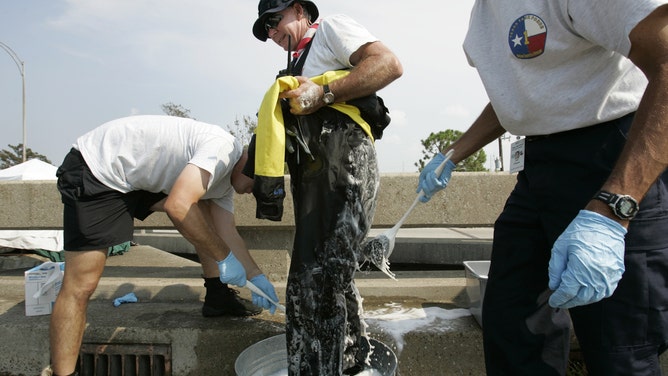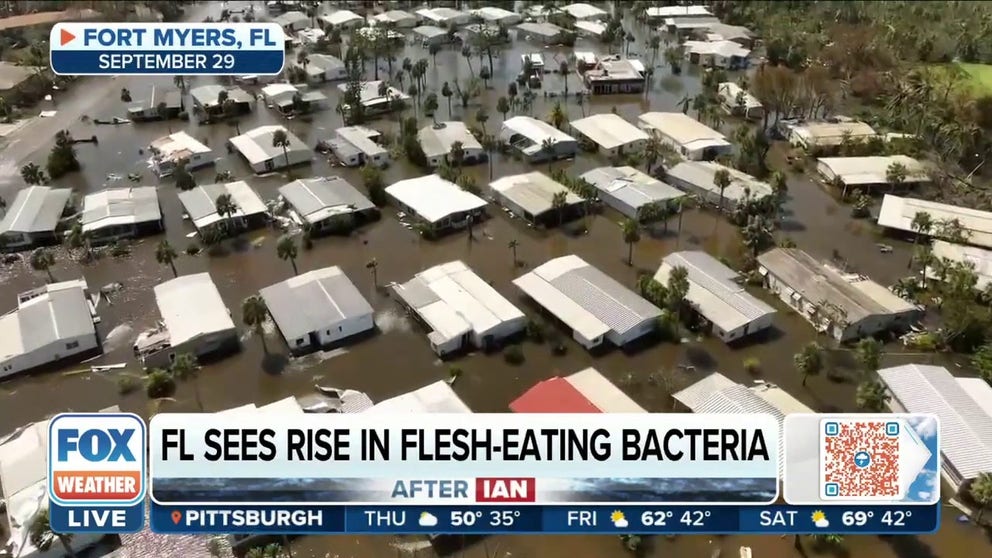Flesh-eating bacteria threatens Florida following Hurricane Ian
Hurricane Ian killed over 100 people, now flooding from the storm looks to be nurturing another killer, flesh-eating bacteria.
Flash-eating bacteria threatens Florida following Ian
Environmental Engineer Tracy Fanara explains Vibrio vulnificus and weighs in on the uptick in cases for The Sunshine State.
Cases of flesh-eating bacteria are on the rise in the Sunshine State following hurricane Ian. Floridians may be surprised, but scientists are not, as numbers often rise after hurricanes.
"My colleagues and I have been watching very closely, looking at the spikes in bacteria," environmental engineer Tracy Fanara told FOX Weather Wednesday. "Vibrio vulnificus is a (flesh-eating) bacteria that we're seeing an uptick in, just like we saw after Hurricane Irma."

A teenager contracted the bacteria after cutting her leg on vacation. She spent a month in the hospital and endured 17 surgeries and is still recovering 2 months later.
(Eva Russo for The Washington Post / Getty Images)
This year, the state reported 11 deaths out of 65 cases. Lee County alone, where deadly Hurricane Ian made landfall, tallied 29 cases and 4 deaths.
Last year the entire state only registered 34 cases and 36 deaths in 2020. Case numbers in 2017, when Category 3 Hurricane Irma devastated Florida, 11 died out of 50 sickened.

So far in 2022, 65 people contracted flesh-eating bacteria and 11 of them died.
(FOX Weather)
The bacteria grow in brackish water, part salt, part fresh, which Florida saw an abundance of after Category 4 Ian. Nine feet of salty storm surge rushed into rivers and lakes as far as two miles inland.
Two feet of rainwater fell from the storm in some areas across Florida. The floodwater washed into rivers and eventually the coast, creating the salty mix the bacteria thrive in, especially in the Florida warmth.
HURRICANE IAN BY THE NUMBERS: THE SCOPE OF THE CATASTROPHIC DAMAGE

Flooding was still a major concern in Florida nearly one week after Hurricane Ian.
(Getty Images)
"We know that there's a correlation between standing water, heat and drops in salinity," Fanara said. "And this is a pathogen that can be very serious."
People get the bacteria through open wounds and ingesting it. Raw oysters in summer are a frequent carrier, according to the Florida Department of Health.
And right now, many in the state, particularly southwest Florida, are doing rough clean-up work in flooding.
Flesh-eating bacteria on the rise in Florida following Hurricane Ian
Dr. Peter Hotez joined FOX Weather to talk about Vibrio Vulnificus, a flesh-eating bacteria that is on the rise in Florida following Hurricane Ian.
"One fatality was a volunteer coming down here. You're in the water. You're, you're removing debris. You're more likely to be cut," she said. "It's really important to take care of it as soon as possible within the first 72 hours because, after that, your chances are not good."
HOW TO WATCH FOX WEATHER ON TV

Vibrio vulificus as depicted by a scanning electron micrograph sem.
(BSIP/UIG / FOX Weather)
The bacteria can cause a skin infection and eventually break down. The health department warns that the infections sometimes require amputation for recovery.
Both ingested bacteria and that contracted through an open wound can infect the blood stream. In that case survival rates are only 50%.
Someone with a weakened immune system is 80 times more likely to develop a bloodstream infection than a healthy person, Florida Heath said.

A member of a search and rescue team being hosed down with bleach and soap after Hurricane Katrina to protect against toxins and bacteria like Vibrio Vulnificus.
(Robert Gauthier/Los Angeles Times / Getty Images)
"Vibrio is more likely to be able to impact you if you have compromised immune systems, kidney disease, liver disease, this can be even worse," said Farnara.
Medical officials say that flesh-eating bacteria infections are rare but underreported. Most healthy people exposed to it do not get sick or have mild cases that don't require treatment.
About 80,000 cases are reported in the U.S. every year, 65% of them are caused by eating contaminated shellfish. About 100 people die annually, according to the CDC, with a majority of infections occurring from May through October.

